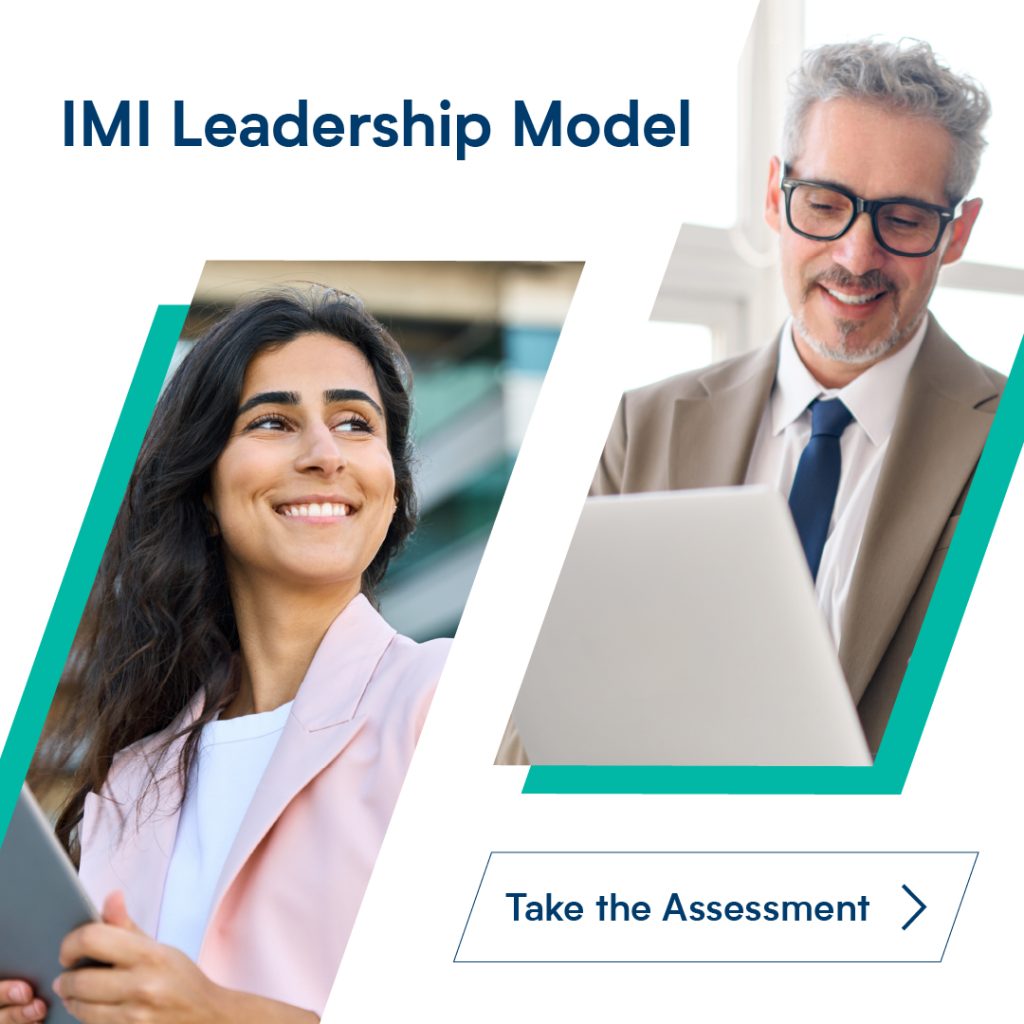Event Insights: Adaptive HR for the Future of Work, with Dr Marianne Roux
IMI recently hosted the second in 2023’s People Strategy Network series of events, led by Dr Marianne Roux, a Future of Work Strategist with over 30 years experience in senior level HR roles. Having worked across three continents, and with some of the world’s most significant organisations, Marianne was able to offer a huge amount of thought-provoking insights to the HR professionals in the room.
The “future of work” conversation has largely been hijacked by discourse around hybrid working, but in reality it’s a lot more complex. It’s not enough to simply concentrate on your hybrid working policy, instead, organisations need to have a full future of work strategy, owned by the HR team. While as an HR professional, you will need buy-in from your CEO and board members, they don’t have the on-the-job knowledge that you do, so developing the future of work strategy should sit with you.
In order to drive real transformation with the organisation, you need to define the future of work strategy for 2025 – leaving it until 2030 is too late! The global pandemic and the advent of generative AI have thrown us into a whole new world of work – no one is doing the same job they were five years ago, from roles as diverse as doctors, or police, to HR professionals themselves.
So, it’s time to think about whether the people in your organisation are surviving or thriving. The truth is that many are barely surviving. Projects are being stalled and pushed back all the time – people are resigning, even CEOs are out on stress leave. It’s the job of HR to re-energise the people.
One way to re-energise team members is to make them feel cared for, and connected via purpose. Whether that’s in the way resources are allocated, agile ways of working, or human-centred design. Agile is the way forward to help prevent burnout.
Every so often, something seismic happens to the way we work – think about events like the invention of electricity and the invention of the internet. But there are some much more recent examples. Covid was in fact the biggest experiment in the history of work. Next up will be generative AI. It’s already time to think about how it will revolutionise HR processes, so that you can spend your time focusing on other things. Before you can do this, you need to be tech savvy and data savvy – tech should be your biggest investment this year.
Speaking of tech, the future of work will be all about industry 4.0 and 5.0. HR should focus on what humans can do better than technology. It’s about going back to the human aspect and leveraging factors like creativity, story telling, and human relationships.
Once you understand the importance of tech, and how it relates to the importance of people, you can begin to build your team and assign duties. There are certain ways you can structure your HR team in order to get the most out of the people, with one such way being the Kincentric Model.
In this model, 50% of HR employees should be concerned with experience delivery. These are the people who will work with the technology, in order to deliver functions like recruitment, performance management, and employee relations. They’re not involved in developing the strategy, but in executing it.
Another 25% should be a people solutions team. They essentially operate as consultants, flowing to different projects and solving complex problems. They develop the overall HR strategy, and run the strategic projects that come from it.
The remainder of the team are the HR business partners, who act as account managers. These are senior coaches, who sit alongside the business team and make sure that the talent and capabilities are there when they’re needed. Thanks to their work, they’re able to feed back into other areas of the HR function, and may run some of the strategic projects.
In each of these three functions you need to build smaller teams and decide on the role of each team. Ensure that you map your processes and define your strategy, based on overall goals.
It’s important to remember that your HR team can’t take on too many projects – rather focus on two or three strategically significant projects. For example, you might decide to focus on creating a compelling employee experience, modernising your talent process, or automating existing manual processes.
Whatever your focus, you’ll be leveraging your talent and digital tools to help create future fit leaders, and psychologically safe teams, who can perform at their peak.
—
IMI Corporate Members get access to regular in-person and virtual events. Find out more about IMI membership.
—
FAQ
How can HR professionals develop a comprehensive future of work strategy that goes beyond hybrid working to address the evolving needs of their organizations?
HR professionals should focus on creating a holistic future of work strategy that incorporates agile methodologies, human-centered design, and technology integration, ensuring that the strategy is developed collaboratively with input from the CEO and board members while leveraging their unique insights from the frontline.
What strategies can HR leaders implement to re-energize employees and foster a thriving workplace culture in the face of ongoing challenges?
HR leaders can re-energize employees by promoting a culture of care and connection through purpose-driven initiatives, prioritizing mental well-being, and ensuring that resources are allocated to support agile working practices that reduce burnout and enhance job satisfaction.
In what ways can HR teams structure themselves to effectively manage the demands of technology and human resource delivery in the era of generative AI and Industry 4.0?
HR teams should adopt the Kincentric Model, with a focus on experience delivery, people solutions, and business partnership roles. This structure enables HR professionals to execute strategies effectively while also ensuring that they remain agile and responsive to technological advancements and the needs of the workforce.



